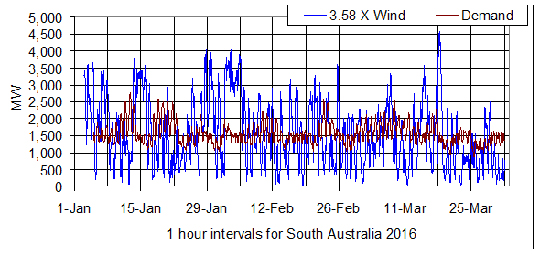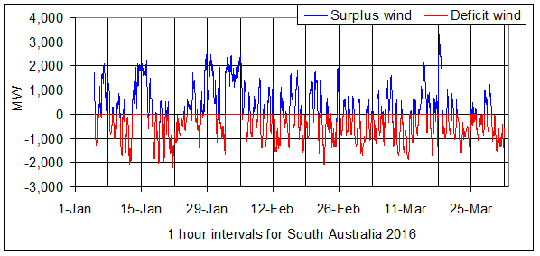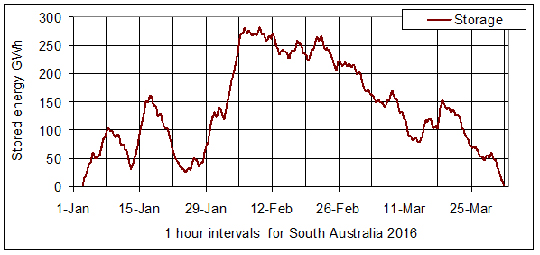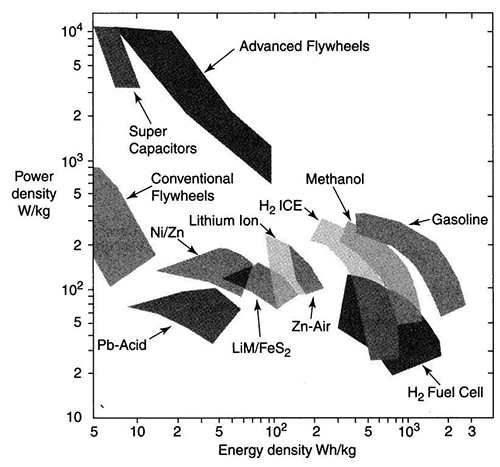 |
|||||||
|
|||||||
|
South Australia - a Renewable State?Paul Miskelly and Tom QuirkWith $90 billion spent on batteries and 4,000 MW of more wind farms, South Australia could be a totally renewable state, at least for electricity. Australia along with one or two other states has been described by Al Gore as the canary in the coal mine for climate change and renewable energy. This interesting comparison was rewarded by South Australia putting the canary in the dark as there was no coal. But it would be interesting to see what the electricity supply of South Australia might be like with zero CO2 emissions as is the fond wish of many and even of learned societies. There are many combinations of renewables that could be considered with wind, solar, biomass, pumped storage and various storage technologies. The following is the simplest, combining wind farms and batteries. The starting point for this analysis is the dominance of wind power in South Australia. To expand this renewable source we must add battery storage as there are no present alternatives. The present 1575 MW of wind farms meets some 35% of demand and expanding this to give an average 100% of supply. We must store the surplus and use that when the wind falls away. The performance of the present demand and wind farms supply is sampled from AEMO data for 3 January to 31 March 2016. So wind farm output is increased by 358% to 5644 MW, an additional 4069 MW of wind farms, so that the average over 3 months equals the average demand. This is presented in Figure 1 and shows periods of surplus and deficit of supply.  Figure 1: Variations of demand in South Australia for January to March 2016 and 358% increased wind farm supply. (Source AEMO) The total surplus is equal to the total deficit and the detail is shown in Figure 2. There are periods for example 17 to 24 January 2016 where the average deficit is 750 MW for 168 hours, a total of 125,000 MWh. This is a measure of the energy storage that is needed from the surplus energy of the period 13 to 17 January. For the year 2016 the demand in South Australia was 14,400 GWh so the storage need is of the order of 1% of the demand for the year.  Figure 2: Variations of surplus and deficit from wind farm supply compared to demand for January to March 2016 The variations in storage needs are shown in Figure 3. The maximum storage need is defined as the value necessary to satisfy demand at all times. This is a value of 270 GWh (270,000 MWh) for the period analysed. This is 2% of the annual demand for electricity in South Australia.  Figure 3: Storage of surplus wind farm energy to match demand The challenge is to identify storage technology for some 300 GWh of supply. The base case is to calculate the amount and cost of lead acid batteries to satisfy this need. A very thorough summary of storage technologies is to be found in Sustainable Energy . Figure 4 is a summary of the storage technology power and energy density capabilities. The range of batteries extends from lead acid to lithium-ion and beyond. For this analysis the energy densities are the mid range values for lead acid and lithium-ion. On the bottom far right of the figure, the hydrocarbons (fossil fuels) show energy densities of a factor of ten greater than the batteries considered here.  Figure 4: Scatter plot of power and energy density for storage technologies from page 400 of reference 1. So for the lead acid batteries adopting a value of 40 Wh/kg for 300 GWh of storage requires 7,500,000 tonnes of lead acid batteries. For higher energy density lithium-ion batteries have an energy density of 140 Wh/kg so only 2,100,000 tonnes would be needed. But this could be realized at what cost? Estimates of lead acid battery costs are around $0.20 per Wh while lithium-ion batteries vary from $0.50 to $0.90 per Wh. The Power Wall 2 lithium-ion battery from Tesla is A$8,000 for 14 kWh but this is a retail price of $0.57 per Wh. The wholesale bulk price could be as low as $0.30 per Wh with better performance than the lead acid battery in discharge rate and lifetime. Willem Post has a detailed article on energy storage in Germany . His base case is lead acid batteries with massive, bulk energy storage. The cost per Wh is $0.32. So the battery storage is some $60 to $90 billion to store the surplus energy from 4,000 MW of new wind farms with substantial running costs due to battery lifetime and erratic discharges. This analysis outlines the storage required to address wind's inherent intermittency. It does not address the requirements, presently unaddressed by wind energy technology, of grid stability and control, which is the need for the provision of synchronous inertia to protect grid stability. Should the battery route be chosen to address this requirement, such provision may indeed require more battery storage. Of course South Australia could close all the gas fueled power stations and build massive interconnectors to the other states and then blame them for CO2 emissions. Perhaps that is why the South Australian government talks of nationalizing the power stations.
1. Sustainable Energy, Second Edition 2012 by J W Tester, E M Drake, M J Driscoll, M W Golay and W A Peters MIT Press. |
|
|



